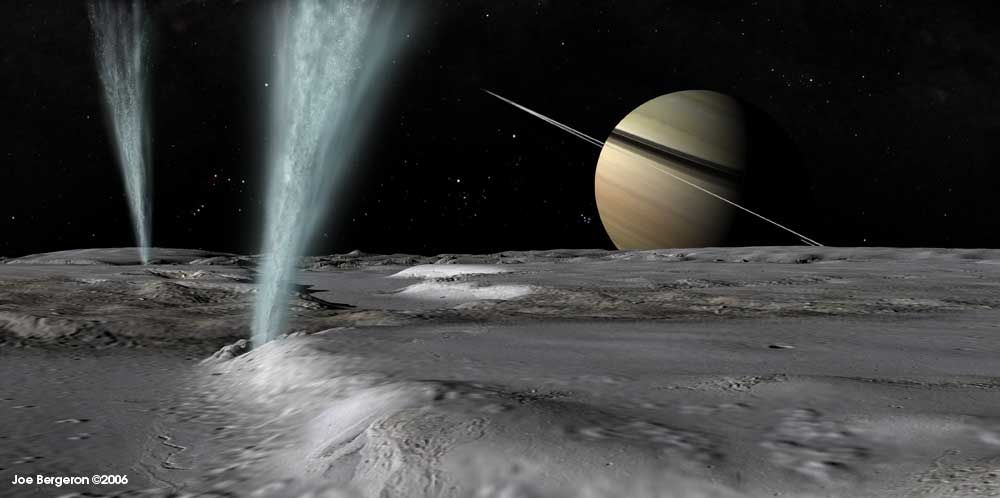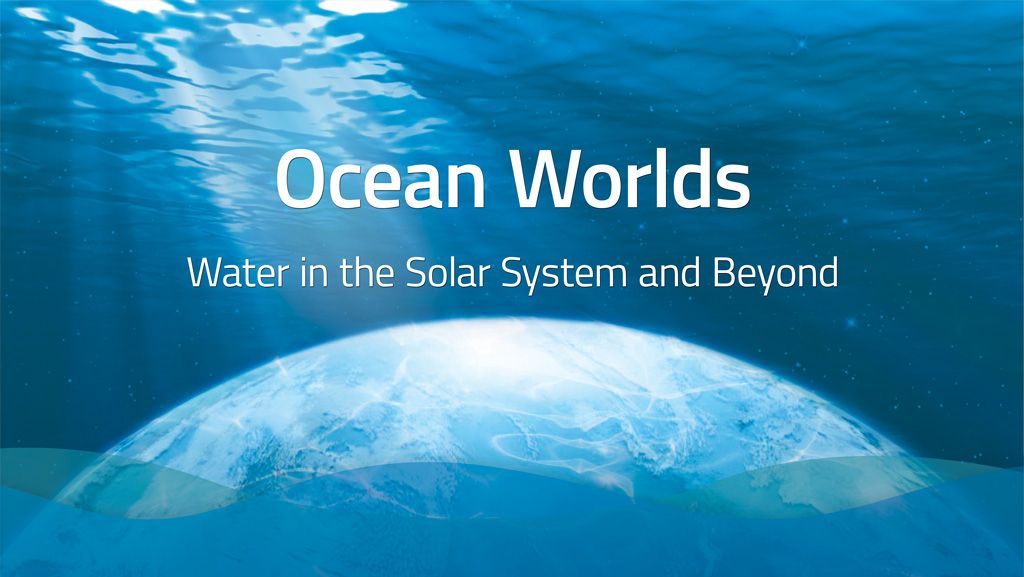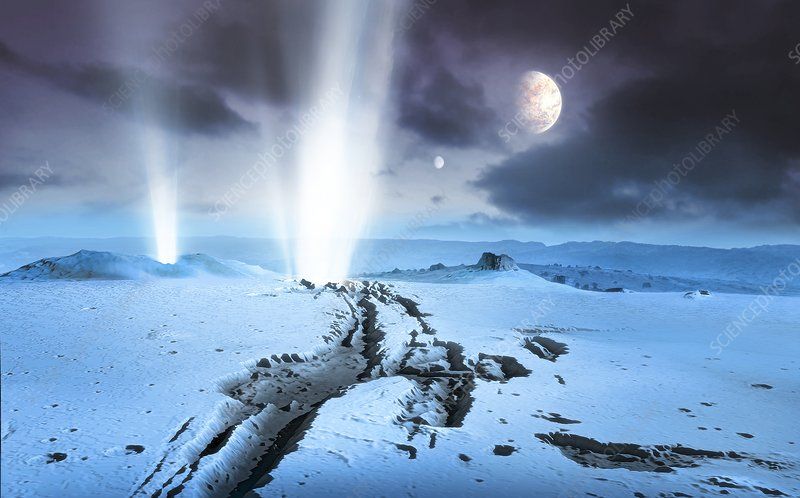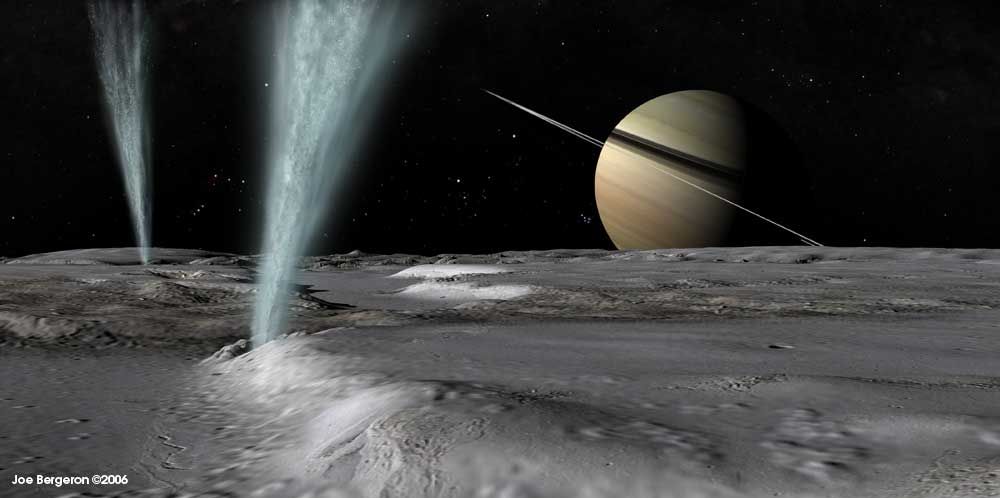Saturn’s Moon Has New Ice and Scientists Aren’t Sure Why
Article by Chris Ciaccia September 24, 2020 (nypost.com)
• With its global ocean, unique chemistry and internal heat, Saturn’s moon, Enceladus, is a promising lead in the search for worlds where extraterrestrial life could exist.
• The NASA Cassini space probe spent 13 years circling Saturn, taking pictures and data of and its moons which were relayed to Earth before it was sent crashing into the planet in 2017. Researchers has used Cassini’s readings of its ‘on-board Visual and Infrared Mapping Spectrometer’ (VIMS) to look at heat signatures on Enceladus to create a map of the moon.
• In 2005, Cassini observed that the southern hemisphere of Enceladus had more than 100 geysers shooting “out enormous plumes of ice grains and vapor from an ocean that lies under the icy crust,” according to a NASA statement. The new research, published in the scientific journal Icarus, revealed more recent images showing that the northern hemisphere of Enceladus has been resurfaced with ice.
• “The… south pole is young, which is not a surprise because we knew about the jets that blast icy material there,” said study co-author, Gabriel Tobie, VIMS scientist with the University of Nantes in France. “Now, thanks to these infrared eyes, you can go back in time and say that one large region in the northern hemisphere appears also young and was probably active not that long ago, in geologic timelines.” The southern geysers are believed to have caused the moon’s “tiger stripes” – evenly spaced fissures, approximately 81 miles long and 22 miles apart.
• It’s unclear how the icy resurfacing occurred or when it occurred. The ice could have come from icy geyser jets or by a more gradual movement of subsurface ocean rising to the surface through fractures in the crust. In 2017 Cassini detected the presence of hydrogen in Enceladus’ atmosphere, which could be meaningful as a “potential source for energy from any microbes,” said Cassini project scientist Linda Spilker. The next year, scientists announced that they had found complex organic molecules, the “building blocks” for life, on the moon.
• In June, NASA announced its ‘Dragonfly’ mission to explore Saturn’s largest moon, Titan, which could potentially host extraterrestrial life.

Enceladus, Saturn’s mysterious moon that could support life, could be more geologically active than previously thought, according to a new study.
The research, published in the scientific journal Icarus, looked at new images from NASA’s Cassini spacecraft and found the northern hemisphere of

Enceladus has been resurfaced with ice.
In 2005, Cassini observed that the southern hemisphere had more than 100 geysers shooting “out enormous plumes of ice grains and vapor from an ocean that lies under the icy crust,” according to a NASA statement. However, the new images point out it is happening in the northern hemisphere as well.
With its global ocean, unique chemistry and internal heat, Enceladus has become a promising lead in our search for worlds where life could exist.
The researchers used Cassini’s on-board Visual and Infrared Mapping Spectrometer (VIMS) to look at heat signatures on Enceladus and created a new map of the moon to come up with their findings.
“The infrared shows us that the surface of the south pole is young, which is not a surprise because we knew about the jets that blast icy material there,” said study co-author, Gabriel Tobie, VIMS scientist with the University of Nantes in France, in the statement. “Now, thanks to these infrared eyes, you can go back in time and say that one large region in the northern hemisphere appears also young and was probably active not that long ago, in geologic timelines.”
FAIR USE NOTICE: This page contains copyrighted material the use of which has not been specifically authorized by the copyright owner. ExoNews.org distributes this material for the purpose of news reporting, educational research, comment and criticism, constituting Fair Use under 17 U.S.C § 107. Please contact the Editor at ExoNews with any copyright issue.



 NASA’s plans to explore the ice moons of the Solar System are getting more detail as the space agency is developing a robot that would use steam to power itself in deep space.
NASA’s plans to explore the ice moons of the Solar System are getting more detail as the space agency is developing a robot that would use steam to power itself in deep space.







